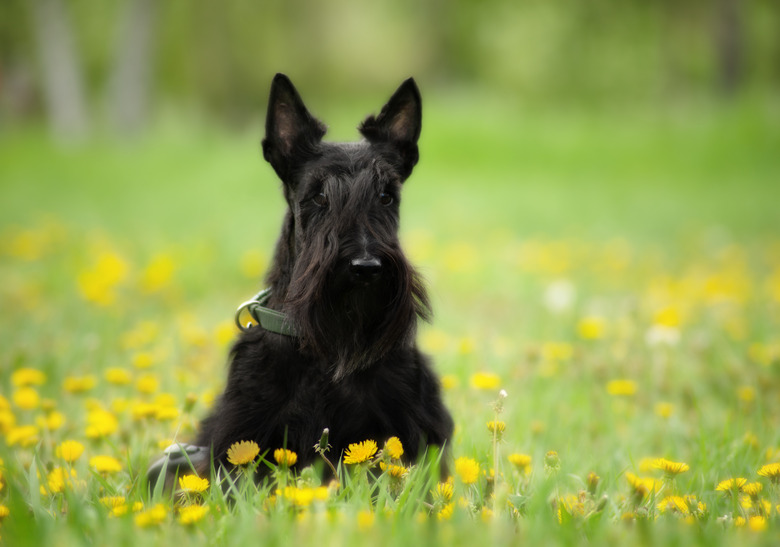Common Types Of Cancers In Dogs
Cancer is a fairly common diagnosis for our canine companions. About 25% of dogs will develop some form of it, and for senior dogs it's the most common cause of death. A dog's breed can also play a role.
Common signs of cancer in dogs
Common signs of cancer in dogs
Symptoms can vary and they can mimic signs of other diseases. Things to watch for include:
- Weight loss
- Appetite loss
- Difficulty eating
- Difficulty breathing
- Increased thirst and increased urination
- Lethargy
- A lump or growth of any sort, especially one that changes rapidly or fluctuates in size
- Lameness
- Enlarged lymph nodes (sometimes mistaken by pet owners for lumps, especially at the upper neck beneath the jaw, at the front of the shoulders or behind the knees)
- Excessive aggression or irritability
Common types of canine cancer
Common types of canine cancer
This is a list of the most common types of canine cancer. More information about each type follows this list.
1. Mast cell tumors (MCTs)
2. Melanoma
3. Hemangiosarcoma
4. Lymphoma
5. Osteosarcoma
6. Mammary carcinoma
7. Transitional cell carcinoma
Mast cell tumors (MCTs): This is the most common skin tumor in dogs and its appearance can vary considerably. For example, sometimes an MCT appears as a raised, ulcerated skin mass and other times it resembles the benign fatty tumor called a lipoma. Tumors that fluctuate in size (i.e they get bigger, then become smaller again) are suspicious for MCTs. High-grade mast cell tumors are more likely to spread to other parts of the body compared to low-grade ones.
Melanoma: Melanoma is a tumor of the pigment cells, called melanocytes. Even though in people we think of melanoma as skin cancer, in dogs, the skin form is usually benign.
Canine melanomas occur predominantly in the oral cavity. Melanoma can also affect a toe at the nail bed, or the eye. The oral and nail bed forms are cancerous. Like the skin form, canine ocular melanoma tends to be benign. The oral form has a high likelihood of spreading throughout a dog's body whereas the nail bed form usually just spreads to the lymph node closest to it.
Hemangiosarcoma: The prefix hemangio- refers to blood vessels, so hemangiosarcomas are a type of sarcoma cancer that affects blood vessels. In dogs, the most common areas affected are the spleen, heart, and liver. This type of cancer is likely to spread to other parts of the body.
Dogs can also get cutaneous (skin) hemangiosarcoma. Breeds of dogs most affected are German shepherds, boxers, golden retrievers, Labrador retrievers, and Portuguese water dogs. Male dogs are also more likely to develop this cancer than female dogs.
Lymphoma: This is one of the most common cancers in dogs. It's a cancer of the lymphatic system and lymph nodes. The symptoms of lymphoma can vary but often the first sign is that one or more lymph nodes become enlarged, such as at the sides of the neck below the jaw, the area in front of the shoulders or behind the knees.
Middle-age and older dogs are more prone to developing it along with certain breeds like golden retrievers and boxers.
Osteosarcoma: This is the most common bone tumor in dogs and larger breeds such as great Danes, German shepherds, golden retrievers, Rottweilers, and boxers are more likely to be affected. Osteosarcoma usually affects one of the legs and it is very aggressive. At the time most dogs are diagnosed, the cancer has already spread to other parts of the body. Therefore, before any treatment is instituted, such as amputation of the affected leg, the veterinarian will first need to look for metastasis in other areas of the body.
Mammary carcinoma: This is mammary cancer or breast cancer. Female dogs who aren't spayed or who were spayed after 2 years of age are more likely to develop mammary carcinoma. The risk is lowest for dogs spayed before their first heat cycle. This is a type of cancer that is likely to spread to other parts of the body. Dogs can also develop benign mammary tumors.
Transitional cell carcinoma (TCC): This is a type of urinary tract cancer that occurs in a dog's bladder. Scottish terriers are the most predisposed breed. Other breeds with increased risk include West Highland white terriers, Shetland sheepdogs, Eskimo dogs, Samoyeds, beagles, and Keeshonds. Affected dogs may have recurring urinary tract infections, straining to urinate and bloody urine. TCCs metastasize in over 50% of cases.
A less common cancer: multiple myeloma
A less common cancer: multiple myeloma
Multiple myeloma is a cancer of a type of white blood cell called B lymphocytes (or B cells) which are in the bone marrow. B cells are a part of the immune system and help fight infection. This cancer can spread to multiple areas in the body. It's rare in dogs (and rare in cats,) with less than 1% of canine cancer cases being due to multiple myeloma. Older dogs are more susceptible.
Diagnosing cancer in dogs
Diagnosing cancer in dogs
Cancer diagnosis starts with a physical exam and a medical history. From there, a variety of tests are usually performed. They include but are not limited to:
- Blood work: complete blood count, chemistry and urinalysis. A clotting profile (to evaluate how quickly or slowly your dog's blood can clot) may also be done. Dogs who are 7 years of age and older should have routine lab work performed annually and physical exams twice a year.
- Radiographs (X-rays,) ultrasound, CT, and/or MRI
- Fine needle aspirate (FNA): this is a way to gather cells from lumps and certain internal organs. Sometimes an FNA can be diagnostic for cancer cells and sometimes it's inconclusive.
- Biopsy: this may be done if an FNA was inconclusive or if an FNA isn't possible for some reason.
- Histopathology: biopsies and some FNAs are sent to the lab for microscopic examination by a veterinary pathologist. A veterinary pathologist is a DVM with residency training and board certification in veterinary pathology.
- Bone marrow biopsy
Canine cancer treatments
Canine cancer treatments
As with testing, treatment options depend on the type of cancer, the grade (severity) of cancer, and the location. For certain procedures and therapies, some dogs may need specialty veterinary care from a veterinary oncologist. Treatment might include one or more of the following: surgical removal of part or all of the tumor, chemotherapy, radiation therapy, and immunotherapy, among other things.
The bottom line
The bottom line
Cancer can affect various parts of a dog's body. Prevention and early detection — such as with annual lab work and annual or biannual physical exam — can help improve outcomes. If your dog has been diagnosed with cancer, your veterinarian will talk with you about prognosis and the possibility of an oncology referral. Outcome varies considerably depending on the type of tumor and the stage at which it's diagnosed. But when pursuing cancer treatment, your pet's quality of life is ultimately the most important thing to consider.




